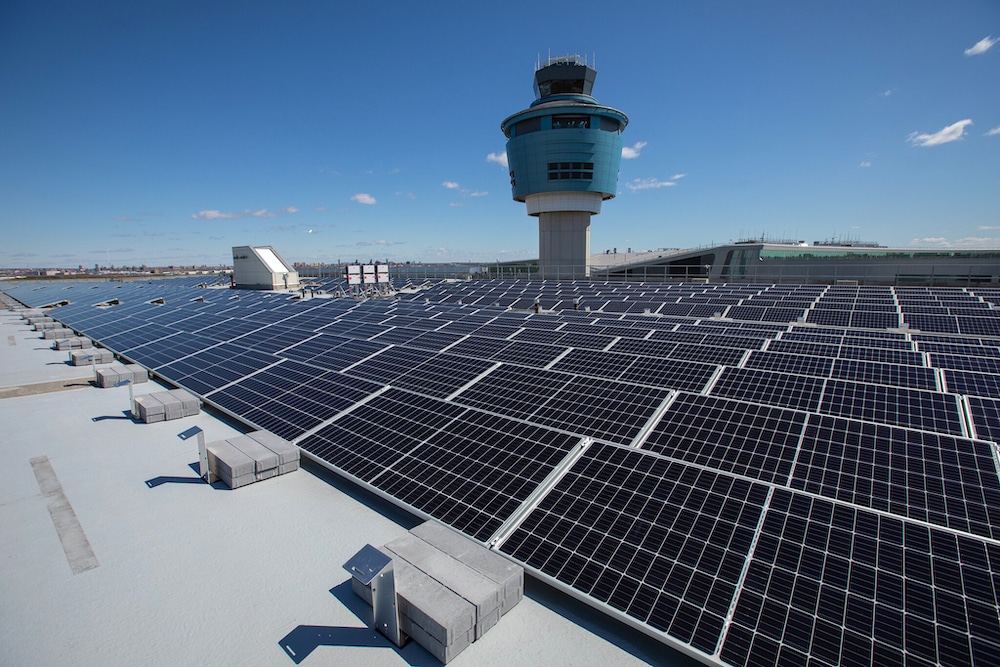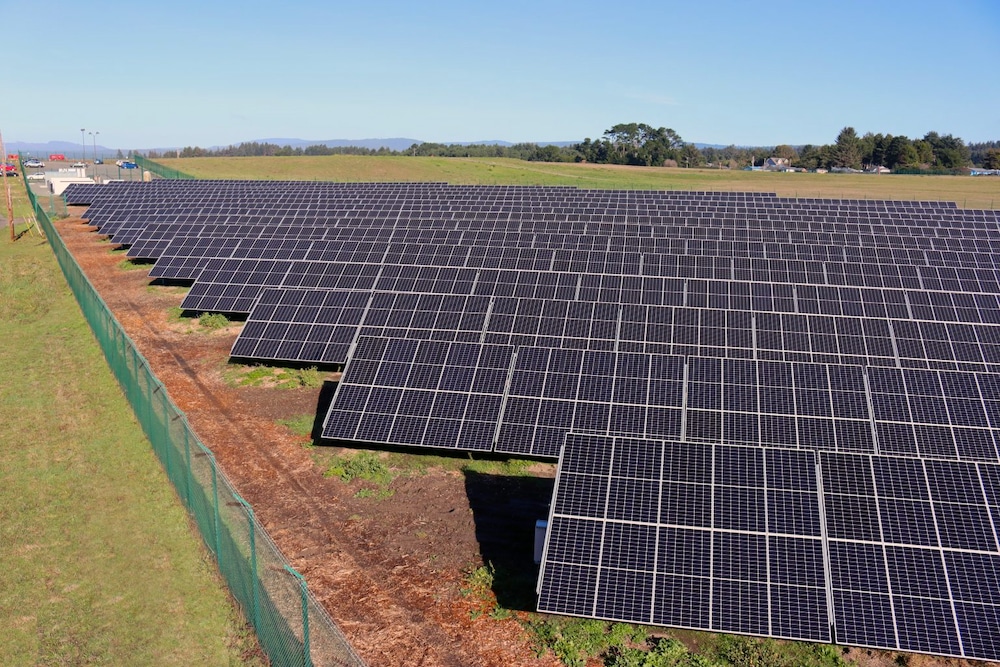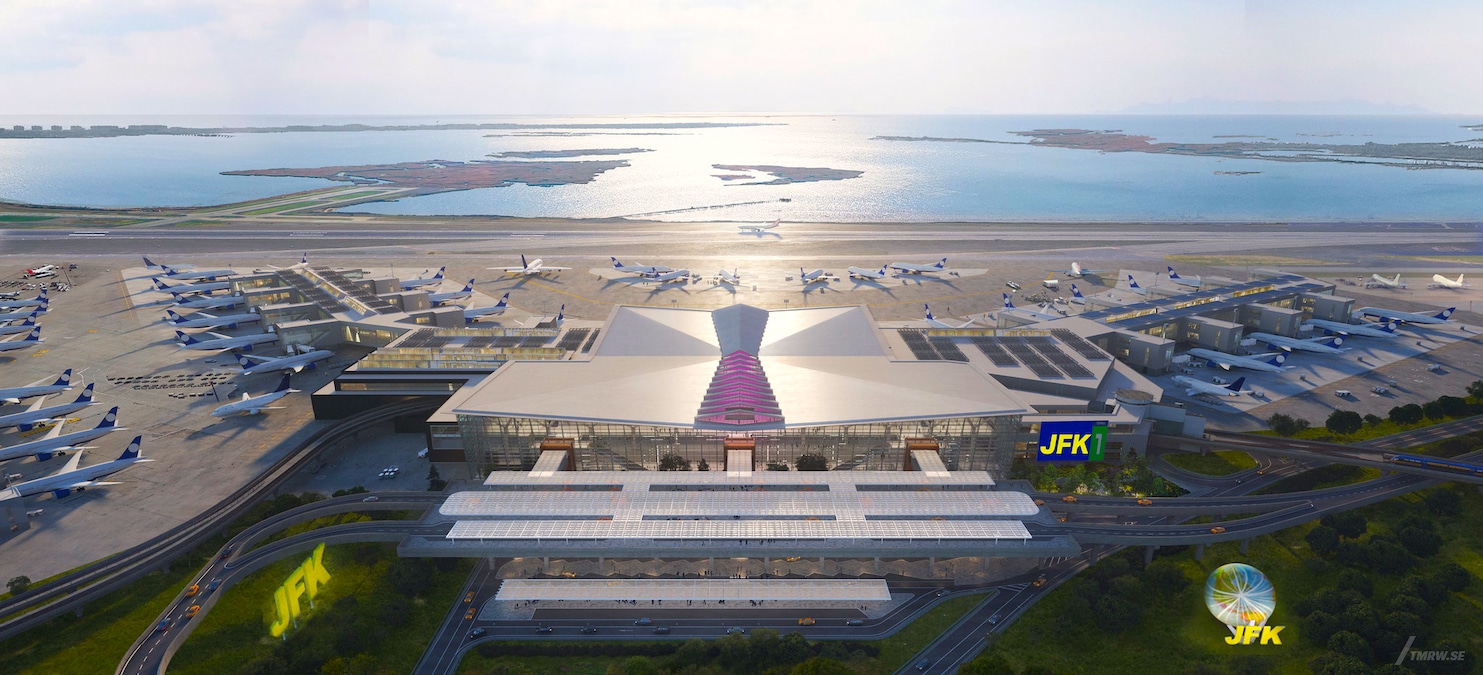Products You May Like
A rendering of the new JFK Airport Terminal 1. Port Authority of New York and New Jersey
 Why you can trust us
Why you can trust us
Founded in 2005 as an Ohio-based environmental newspaper, EcoWatch is a digital platform dedicated to publishing quality, science-based content on environmental issues, causes, and solutions.
Back in 2010, the Federal Aviation Administration released a study that suggested that airports are an ideal location for solar panels, stating that:
Solar technology has matured and is now a reliable way to reduce airport operating costs. Environmentally, solar energy shows a commitment to environmental stewardship, especially when the panels are visible to the traveling public. Among the environmental benefits are cleaner air and fewer greenhouse gases that contribute to climate change. Solar use also facilitates small business development and U.S. energy independence.
In 2020, University of Colorado Denver researcher Serena Kim found that 20 percent of airports in the U.S. had installed some kind of solar component to their power grid. Denver International Airport had become one of the largest solar projects in the U.S., with 42,614 solar panels on a total of 56 acres.
Denver’s airport was one of the first to move into the solar field. According to its website, four photovoltaic arrays with a capacity of 10 megawatts could potentially offset almost 12,000 metric tons of greenhouse gas emissions each year.

Indianapolis International Airport was another early adoptor: the IND Solar Farm is the “largest solar farm on airport real estate in the world” and produces 36.1 million kilowatt hours per year, enough to power 3,650 homes each year.
Canary Media recently reported that more than 13,000 solar panels will be installed by 2026 at New York City’s largest airport, JFK. These solar panels will help meet New York state’s goal to have 100% renewable-source electricity by 2040. The panels will also offer backup power, potentially replacing the polluting diesel generators that turn on when power is lost, and help the airport continue to have power during blackouts.
More From EcoWatch
The two other airports in the New York region have also been equipped with solar. At the newly redeveloped LaGuardia airport, more than 3,500 solar panels were installed over the new parking garage. According to the Port Authority of NY and NJ that oversees all of the NYC-area airports, these will provide 1.7-million kilowatt hours of clean and renewable energy per year. And at the even newer Terminal A at Newark Liberty International Airport, a 4-megawatt solar canopy has been installed overtop its new parking garage.

In a statement about the LaGuardia solar panels, Julie Tighe, president of the New York League of Conservation Voters, said, “This initiative will cut reliance on polluting fossil fuels; supply clean and renewable energy to the airport and its thousands of travelers every day; and support the agency, as well as New York’s, net-zero emissions goals.”
The Port Authority was the first U.S. transportation agency to adapt the Biden administration’s goals of net-zero climate emissions by 2050. These projects around New York City, while not funded by federal grants, dovetail with the White House’s “Airport Terminals Program” which provides $1-billion dollars per year to upgrade airports in a variety of ways, including increasing energy efficiency. A breakdown of the 2022 grants and how airports will use the grants they have received can be found here.
In recent years, the U.S. military has been actively installing solar at bases around the country, including a 56,000-panel array at Holloman Air Force Base in New Mexico.

And the Luke Air Force Base in Arizona had 105 acres of solar panels installed in 2010, with rooftop panels added later on. In 2020, an environmental impact study was cleared so that a solar array could be built at Edwards Air Force Base in California. This 4,000-acre array would produce 650 megawatts of power, which would power homes in the state. The Department of Defense must meet a target of 25% renewable energy by 2025. This article from EnerG outlines many of the initiatives at military bases around the country.
In June of 2022, the Redwood Coast Airport in California completed its microgrid, which includes a 2.2 MW photovoltaic array.

Miami International Airport has a floating solar array in the lagoon adjacent to the airport. While not directly at the airport, Oakland International Airport is now buying renewable energy from a solar farm that’s close to the site. Thirty percent of the Port of Oakland’s power now comes from solar sources. An airport in Iowa City has committed to building solar panels as have two other airports in the state, Dubuque Regional Airport and Washington Municipal Airport. All are using grants provided by the Bipartisan Infrastructure Law (Infrastructure Investment and Jobs Act).
Kansas City is looking to develop a massive farm with 96,000 solar panels, but taking a different approach, in that the power generated from the airport site will be routed to the city. In Virginia, county supervisors recently changed the zoning for Dulles International Airport from residential to industrial, against the advice of environmental groups. This means that a private company can most likely go ahead with removing wetlands and 100 acres of old growth forest to make way for the panels, battery system, switchyard, and substation.
At Quincy Regional Airport in Illinois, solar panels are now up and running and are expected to save the airport $60,000 per year.
So, along with other renewable sources like wind energy, used at the Dallas-Fort Worth location, airports are slowly but surely making a transition to a green energy future.
Subscribe to get exclusive updates in our daily newsletter!
By signing up, you agree to the Terms of Use and Privacy Policy & to receive electronic communications from EcoWatch Media Group, which may include marketing promotions, advertisements and sponsored content.
